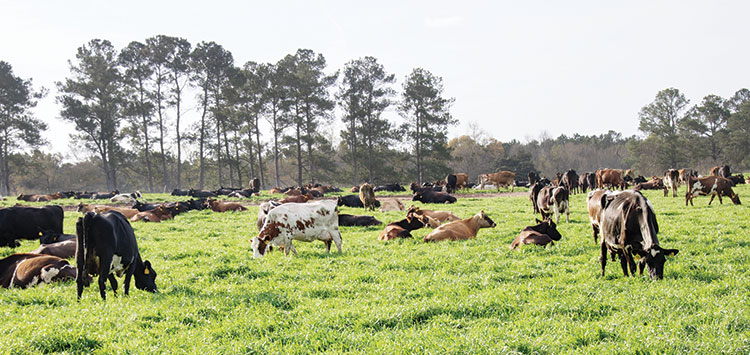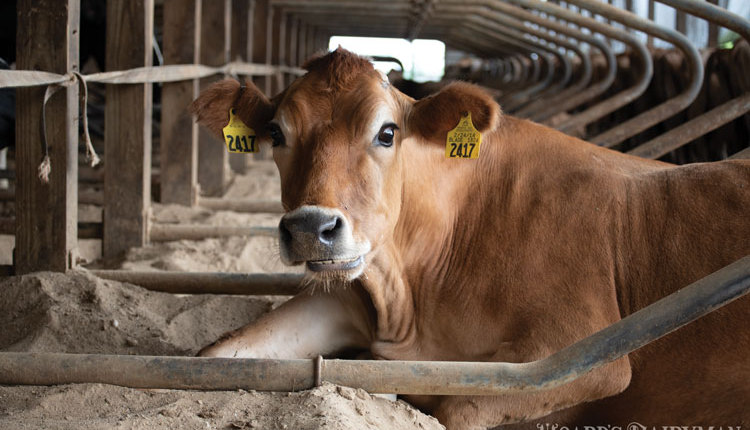The author is an associate professor at the University of Minnesota, West Central Research and Outreach Center in Morris, Minn.

There is growing global demand for grass-fed dairy products. Consumers are becoming more concerned about the origins of food, and grass-fed dairy and organic dairy provide alternative products for consumers.
Organic dairy has been a popular niche market, but there is a growing consumer preference for “grass-fed” dairy in the United States, which is perceived as even healthier than organic or conventional milk. Health food stores have identified grass-fed dairy as an emerging trend based on consumer interest. This may be an open door for dairy production.
The perfect ratio
Omega-6 and omega-3 fatty acids are essential human nutrients, yet consuming too much omega-6 and too little omega-3 can raise the risk of cardiovascular disease, obesity, and diabetes. Today, Americans consume 10 to 15 grams of omega-6 for every gram of omega-3.
Previous research has shown that eating organic dairy products lowers dietary intakes of omega-6 while elevating omega-3 levels. It also contains more conjugated linoleic acid (CLA), a heart-healthy fatty acid.
Through a recently published national study, we found that cows fed a completely organic grass and legume-based diet produce milk with elevated levels of omega-3 and CLA, and thus provide a markedly healthier balance of fatty acids. The improved fatty acid profile in grass-fed organic milk and dairy products brings the omega-6/omega-3 ratio to nearly 1 to 1, compared to 5.7 to 1 in conventional whole milk.
All about the grass
What exactly is grass-fed milk?
This milk (termed “grassmilk”) comes from cows fed a nearly 100 percent forage-based diet. During the grazing season, dairy cows consume almost all their dry matter intake from pasture. The cows may consume certain mineral and energy supplements, such as molasses, at low levels.
During the nongrazing season, grassmilk cows must consume all forage-based feeds. That may include dried or fermented forages (such as alfalfa, clovers, and grass). Cereal crops harvested prior to the boot stage, such as oats and barley, may also be fed.
Annual and perennial forage crops are managed throughout the year to provide for both grazing and stored winter feed. A lot of the grassmilk farmers harvest feedstuffs that are preserved to be fed as baleage. Grass-based diets for cows require careful management of pasture composition and forage production, soil fertility, and animal health.
In a study over three years, we quantified the fatty acid profile in milk from cows fed a 100 percent forage-based diet and compared it to profiles of milk from cows under conventional and organic management. The 1,163 raw milk samples came primarily from three regions of the United States — Midwest, Northeast, and California. All samples came from farmer members of CROPP Cooperative and were tested by an independent laboratory.
We compared the fatty acid profile of milk from cows managed under three systems:
1. “Grassmilk” cows receiving an essentially 100 percent organic grass and legume forage-based diet, via pasture and stored feeds like hay and silage.
2. “Organic” cows receiving, on average, about 80 percent of their daily dry matter intake from forage-based feeds and 20 percent from grain and concentrates.
3. “Conventional” cows fed rations in which forage-based feeds accounted for an estimated 53 percent of daily dry matter intake, with the other 47 percent coming from grains and concentrates. Conventional management accounts for over 90 percent of the milk cows on U.S. farms.
Grassmilk provided by far the highest level of omega-3s — 0.05 gram per 100 grams of milk (g/100 g), compared to 0.02 g/100 g in conventional milk. That’s a 147 percent gain in omega-3s. Grassmilk also had 52 percent less omega-6 than conventional milk and 36 percent less omega-6 than organic milk.
There were some regional and seasonal variations in the fatty acid profile of grassmilk. The highest levels of omega-3s in grassmilk were from the Midwest and Northeast (1.60 percent and 1.58 percent), while California had the lowest (1.40 percent). The Midwest and Northeast had the highest concentrations of omega-6s in grassmilk. The omega-6/omega-3 ratio was the highest in July while cows were on pasture; it was lowest in December.
Seasonal variations may be due to climate conditions that are most extreme during drought or flooding. The duration of the grazing period also impacts forage quality, as does attention to sustaining a good mix of grasses and legumes in pastures.
Improvements in the diet
We modeled daily fatty acid intakes for a 30-year-old woman consuming a typical diet in the United States to assess the impact of switching to grassmilk dairy products. We found that shifting from conventional to grassmilk dairy products may have a positive impact on total omega-3 and CLA intake.
Three servings of grassmilk would provide about 300 milligrams of CLA, which is three-fourths of the daily target intake for adult men and 100 percent of target levels for adult women. For omega-3s, three servings of grassmilk would provide about 22 percent of daily needs for adult men and 32 percent for adult women. Conventional dairy products would supply less than half of these amounts.
The three daily servings of grassmilk would supply up to 58 percent of total daily omega-3 intake. That makes dairy by far the primary source of omega-3 fatty acids across all food groups.
On the other hand, dairy supplies little omega-6, less than 10 percent of the total found in average diets. Most of the omega-6 in the American diet today comes from fried foods, vegetable oils, and processed foods.
For people striving to lower their risk of cardiovascular and other metabolic diseases, for pregnant women, and for infants and children, the greater omega-3 intake from grassmilk may benefit their health.
Dairy farmers looking for ways to lower costs and improve profitability may look at shifting away from high production, high-cost systems that are reliant on purchased grains and concentrate feeds. With a diverse mix of pasture and available cropland for forage production, animal genetics, a reliable milk market, and guidance, many benefits may be realized by grassmilk farms. Understanding the relationship between fat and health outcomes will help guide livestock and dairy farmers searching for ways to promote public health.
More information on the study can be found at https://z.umn.edu/whygrassmatters.






